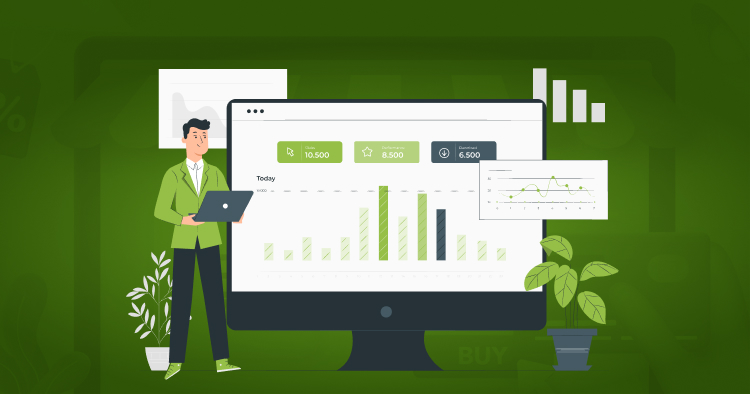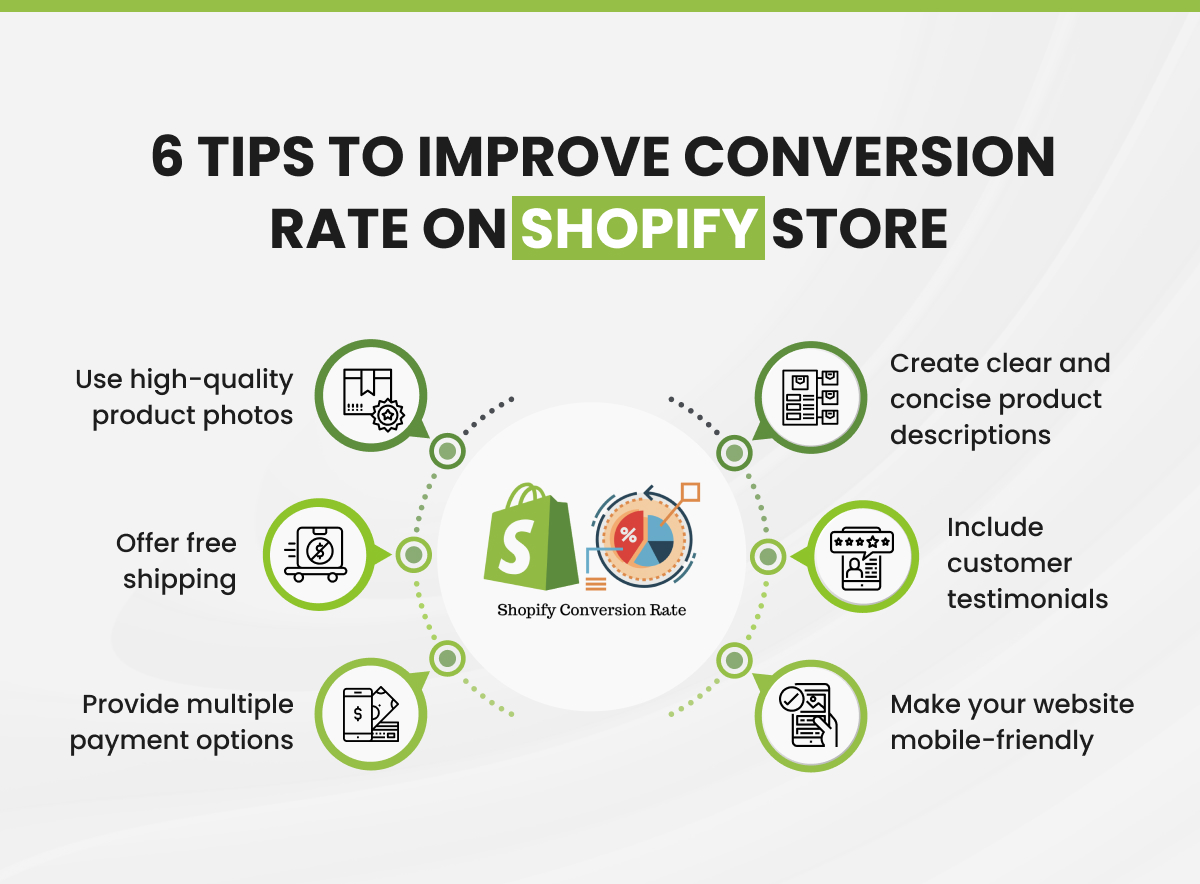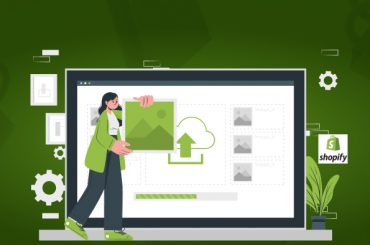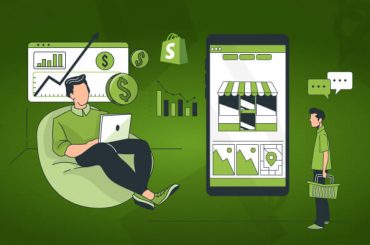How to Build a High Converting Shopify Store
Last Updated | January 16, 2024
Table of Contents
An Overview: How to Build a High-Converting Shopify Store
If you’re in an eCommerce business, chances are you own a Shopify store or at least have heard of Shopify. Shopify is the third largest e-commerce platform, with over 800,000 shops in 175 countries worldwide. As of 2018, Shopify’s paying customers were up 55% year-over-year, and on Black Friday in 2018, it made over $1.5 billion in sales and had 10,978 orders per minute.
Why is Shopify so popular with eCommerce people?
The answer is that it is a complete one-stop eCommerce platform that is extremely easy to use. Shopify lets you start, grow, and manage your business online and offline through Shopify POS.
Creating and owning a Shopify store is an important step forward but only the first step in the long-term race to create an income-generating eCommerce platform. Sure, your store has many beautiful products and features that set you apart from the competition. Still, you’re wondering why is my Shopify store not converting. That is because your products won’t do you any good if you don’t know how to execute an effective conversion marketing strategy.
The main goal is to create a store with continuously increasing conversion rates. Here’s how to build your own highly converted Shopify store. Luckily, you can use some simple tricks to increase your conversion rate and get more sales today. Implement this guide to set up the Shopify Conversions Benchmark for your Shopify store and achieve it like a pro.
-
Choose A Shopify Theme That Reflects Your Brand and Appeals to Your Target Audience
Remember the saying “first impression is the last impression”? Well, it turns out that’s also true for your Shopify store: customers don’t just pay for products; they pay for the overall experience you provide.
Do you ever shop at old, somber, and shady stores, or do you go to stores that look good and have a promising look overall? Obviously, your answer would be the latter.
People who visit your online store only have 50 milliseconds to make a statement about your business. That’s right, 50 milliseconds is all. Before looking at the products, check the store appearance, colors, layout, fonts, etc. So make sure your online store is attractive enough for customers to explore your store further. Keep things simple and make it easy for your customers to have a positive experience.
Personalization and customization are the drivers of business and customer satisfaction. Coordinate the colors with the rest of your design to make it stand out from the crowd, use images that match your brand, and don’t make the buttons too big, don’t be afraid to keep things simple, and use an easy-to-navigate theme and design. Your goal is to employ as many people as possible in your business
Folio3 is the best Shopify theme development company that provides personalized solutions to your needs and works for everyone!
-
Upload High-Quality Product Images That Show Off Your Products In The Best Light
Images are to online shops what batteries are to smartphones. Visitors make product purchase decisions based on uploaded product images. If the image quality is not good, you can say goodbye to your potential customers. Using high-resolution, sharp photos allows users to see products better and make purchasing decisions.
Make sure the image you upload is attractive and has a clear background. Product images with a cluttered background look unappealing to customers.
-
Write Engaging Product Descriptions That Tell A Story And Explain The Benefits Of Each Item
Still thinking about how to get more conversions on Shopify Plus? Good news, we’re not done yet!
When prospects are looking for your product, they don’t want to see boring copy that doesn’t help them decide. Your copy should contain words and phrases that are easy to read but compelling enough for people to buy. Think about what your ideal customer wants and how you can help them find what they want.
Read Also How to Open a Shopify Store
If they are looking for quality products, the text should highlight that. If you have a question about the product, you should answer it. You don’t want to give too much, but you should present enough information to close the sale. Make sure a photo and quality description accompany each product along with its benefits and why they should buy that product of yours. Tell your customers everything they need to know without advertising or overselling.
Read Also ” How Long Does It Take To Build A Shopify Website“
-
Set Up Automated Email Marketing Sequences To Keep Customers Engaged And Coming Back For More
Email marketing is a great way to improve conversions, increase sales, and drive repeat business for your business. The icing on the cake, however, is that it’s affordable and relatively easy to do, especially since most store emails can be automated based on customer actions.
Moreover, you may consider setup DMARC and following other email security measures to keep your Shopify buyer’s data secure from malicious attacks.
Of course, some email marketing services are better suited for Shopify than others. Those offering direct integration can send triggered emails (abandoned cart campaigns) and let you access your store data directly from your email marketing software. One thing’s for sure – there’s a lot to gain with setting up email marketing for your Shopify store, with a lifetime of loyal customers being top of the list. If you haven’t already done so, now’s the time to start evaluating the best Shopify email marketing solutions to help you do that.
-
Use social media to drive traffic to your store and boost sales
You need to appeal to your ideal customers to increase your website traffic. With paid social media advertising, you can create targeted campaigns to serve ads tailored to the customers most likely to click through and purchase your product. You should consider looking to run paid social media ads on these platforms:
Facebook Ads – With 2.6 billion monthly active users as of Q1 2020, Facebook is the world’s largest social media platform. Facebook offers many ways to reach new customers and drive them to your online store.
Instagram Ads – Instagram is a hugely popular platform with over 1 billion active users worldwide, and according to Instagram, 90% of accounts follow your business. Finding hashtags on Instagram and creating marketing videos and images are just some of the Instagram tools you can use to grow your followers. Creating Instagram ads will likely lead to increased website traffic and sales.
Google Ads – Google offers the opportunity to advertise in front of users on the world’s two most significant search engines, Google and YouTube.
Tiktok Ads – Contrary to popular belief, TikTok is more than just a platform for silly videos and memes. It remains a powerful platform for advertisers of nearly every demographic. Shopify values TikTok so much that it partnered with TikTok to launch TikTok Shopping. With TikTok Shopping, Shopify is the first commerce platform to bring organic product discovery and shopping tabs to TikTok.
Social media engagement goes beyond just sharing links to your online store on Facebook, Twitter, etc., in hopes of how to increase the Shopify store conversion rate. Community engagement fosters conversations with the right people, responds thoughtfully, and sparks excitement and enthusiasm
-
Analyze customer data to learn what’s working and what needs improvement
Customer analytics goes beyond making intelligent marketing decisions. It can also have a significant impact on your bottom line. Your business decisions with customer analytics can be as simple as determining which advertising platform will give the best ROI. These can also be complex business decisions, such as identifying the entire customer journey and creating personalized marketing campaigns accordingly.
Companies use analytics to make business decisions related to marketing, product development, sales, etc. Customer journey analytics also help sales teams understand their customers’ buying journeys. Product teams can use customer analytics to reveal features that customers like and don’t like, so they can build better products. Customer service and retention teams can use customer analytics to predict and reduce customer churn.
Wrap Up About How to Build a High Converting Shopify Store
With these tactics in your marketing toolkit, you should now be able to generate more website traffic for your online store. Increasing traffic starts with picking a tactic and relevant channel and getting started or hiring Shopify experts at Folio3 to avail the best Shopify website design services, from Shopify theme customization services to Shopify store development services. They’ve got it all!
FAQs About how to build a high converting shopify store
Q: How to monitor your shop performance and make changes as needed?
One of the best ways to know how your business is performing is to get direct feedback through reviews. Customers can give a first-hand impression of their experience with your website and business. This helps determine the weakest elements and the aspects that need to be changed. Get more reviews by creating a page on your website, encouraging reviews, and asking for reviews from previous customers in follow-up emails. Data analysis can be used to collect information from various sources that can be used to analyze performance.
Q: How to Use Shopify’s built-in features to increase sales and conversions?
You can find the built-in tools that help you create, execute and analyze digital marketing campaigns from the shopify built-in features. Shopify help reduce the barriers to business owners to make commerce better for everyone.









